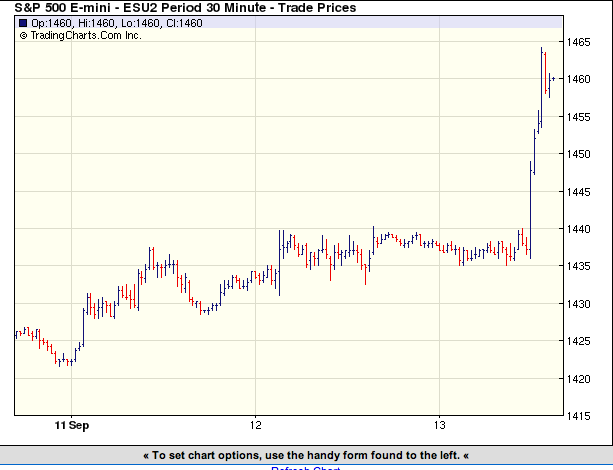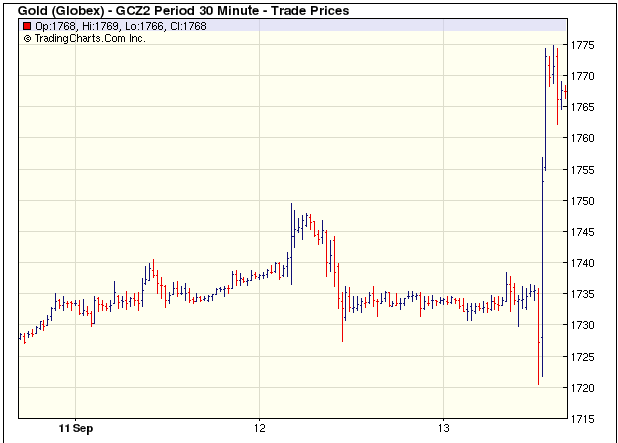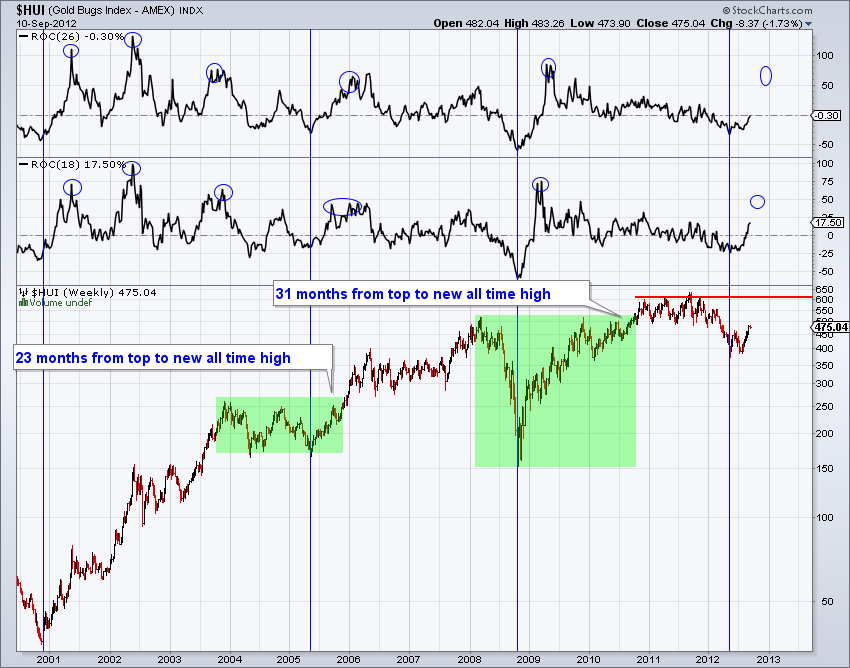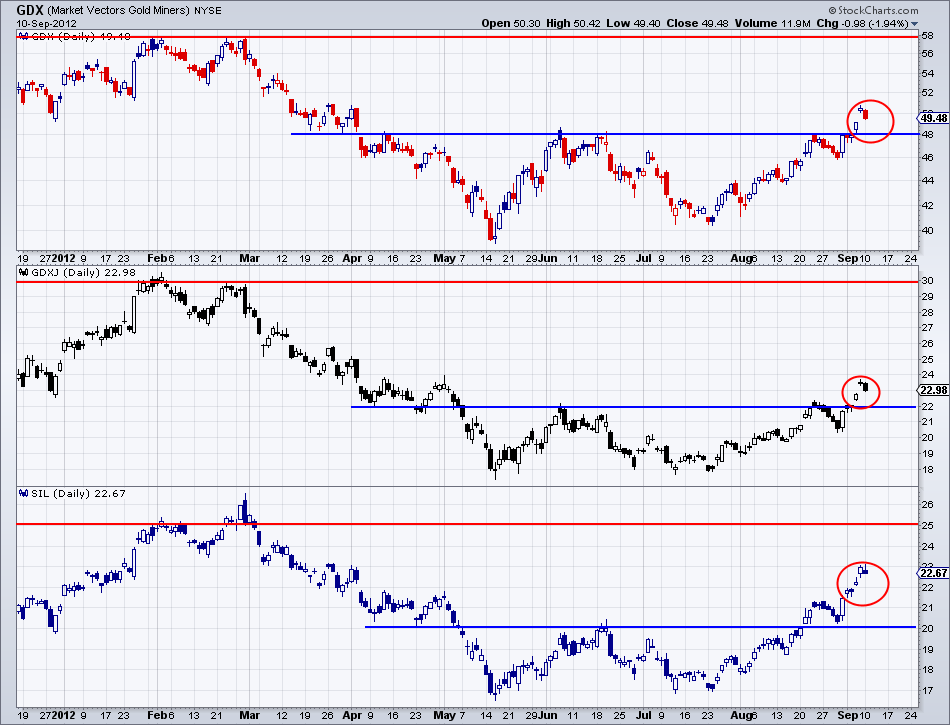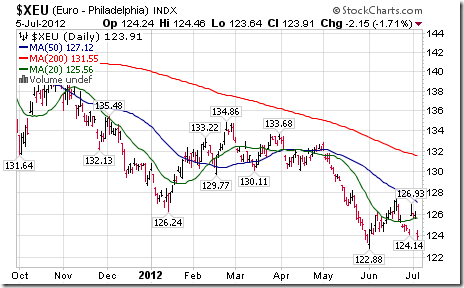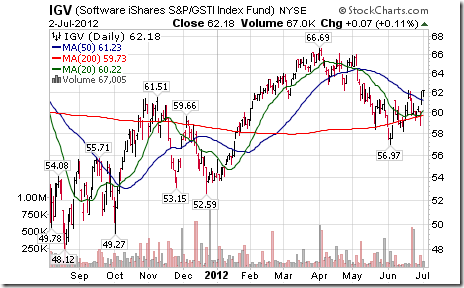

The Canadian market is likely to start catching up to the US market which has outperformed year to date, This week’s Market Minutes video highlights shows how. Check it out by clicking here. (Ed Note: The Outlook for Canadian Stocks, US Stocks, Gold & Oil is are in Tyler’s Sept. 10th Market Minutes video)
I wrote a new book over the summer, it will be available in a pre-release version to Stockscores users before the end of the year. Over the next few weeks I will share excerpts from the book, The Mindless Investor – Make Money in the Market by Overcoming Your Common Sense. Here is a piece from the chapter, The Little Guy Has an Advantage.
Performance Is Easier with Less Capital
Assuming you don’t have hundreds of millions of dollars or more in your trading account, you have an advantage over any fund manager. It’s a lot easier to double $100,000 than to make a 100% return with $100 million, $1 billion or $10 billion. With a method that is appropriate for the amount of capital you have to invest, you can beat the market, and doing so is easier with a relatively small amount of capital.
The key, of course, is having a good method for trading the market-one that gives you the ability to beat the market. With that and a relatively small pool of capital, you can outperform even the most successful big money managers.
As an individual investor you can choose strategies that require you to move in and out of stocks quickly, to hold them only when they are trending and to get out when the trend is losing momentum. Since the size of your positions will be relatively small, you can buy and sell quickly and without a significant impact on the price you pay when you buy or the price you receive when you sell.
You can trade opportunities that can only be taken advantage of if the trade size is small. One of my strategies requires that I buy stocks as close to the open of the trading day as possible. This strategy works well, but there are few stocks that trade actively enough to absorb a trade of more than half a million dollars in the short time this strategy requires. A large investor could never make these trades and have an impact on the performance of the fund.
The Right Approach for the Capital You Have
The less capital you have to trade with, the less your ability to do in-depth analysis of the companies you buy. Analyzing a company’s business properly takes time, knowledge and costly resources. When you try to compete with large investment funds on this level, it’s unlikely that you can produce better results than a fund that has industry experts and millions of dollars to devote to research.
But you can be on a level playing field with the big investment funds if you use stock charts and trading data to make your decisions. This information is easily available and comes at a low cost. Whether you’re a large or small investor, you look at the same stock chart.
There are advantages to being small. As an individual investor, you can probably enter and exit any trade in just seconds. You have a greater opportunity to beat the market because the market-beating opportunities you find can have a dramatic effect on the overall value of your portfolio. Provided you have the knowledge and discipline to trade well, it is better to manage your own money than to leave it to someone who has a large amount of capital to invest on behalf of many people. Not because the person running an investment fund lacks skill, but simply because the challenge of beating the market increases as the capital under management goes up. With an approach that matches your capital base, you can beat the big funds.

The US markets have moved up in anticipation of stimulus from the ECB and US Fed. We have already learned of Europe’s plan to lower interest rates through the purchase of short term bonds and this week we will hear if the US Fed will do anything stimulative.
The market has been speculating that there will be action by the US Fed, causing stocks to go higher and the US Dollar to go lower. We are now seeing money rotate in to the commodity and financial sectors.
If the Fed does take stimulative action this week, expect that the Canadian market will benefit the most. The TSX has underperformed the US market this year and has a lot of catching up to do. A rotation in to commodity stocks will help the TSX improve its performance.
This week, I did my Market Scan for Canadian stocks with good charts. Here are a few names to consider:

1. V.MEI
Breaking out from a long term cup and handle pattern with strong volume today, looks likely to continue the strength it has shown over the past couple of months. Support at $1.80.

2. T.JAG
I featured this in my daily newsletter (available at www.tradescores.com) on Monday, the stock appears to be in the early stages of a turnaround. Support at $1.09.
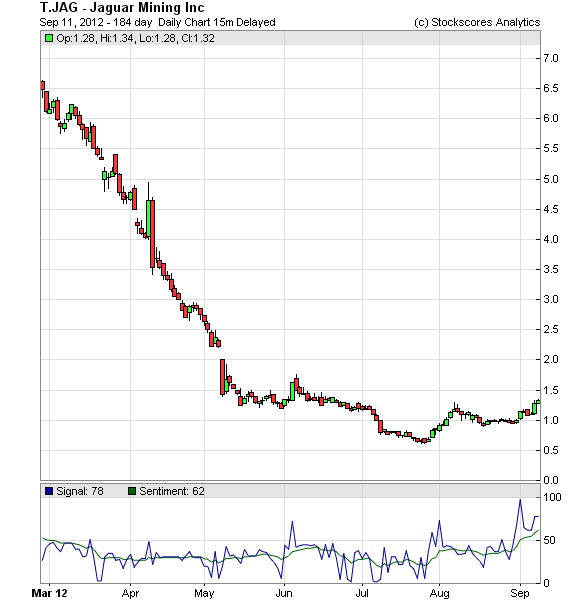
References
- Get the Stockscore on any of over 20,000 North American stocks.
- Background on the theories used by Stockscores.
- Strategies that can help you find new opportunities.
- Scan the market using extensive filter criteria.
- Build a portfolio of stocks and view a slide show of their charts.
- See which sectors are leading the market, and their components.
Disclaimer
This is not an investment advisory, and should not be used to make investment decisions. Information in Stockscores Perspectives is often opinionated and should be considered for information purposes only. No stock exchange anywhere has approved or disapproved of the information contained herein. There is no express or implied solicitation to buy or sell securities. The writers and editors of Perspectives may have positions in the stocks discussed above and may trade in the stocks mentioned. Don’t consider buying or selling any stock without conducting your own due diligence.

